Cover image: America Seen Through Stars and Stripes, New York City, NewYork Painted, 1976, by Ming Smith
Ming Smith, not necessarily a name widely known in photography, was the first Black woman to have her photographic work accepted into the Museum of Modern Art, in 1975.
The only female member of the Kamoinge Collective, and a dedicated image maker to capturing the humanity for the Black Experience, Ming Smith’s imagery and life trajectory is due a mighty relook. Currently staging an online exhibition of a selection of Smith’s work, from her image of Grace Jones as a Ballerina, to the playwright August Wilson, Pippy Houldsworth Gallery has moved the exhibition online through Vortic.
We caught up with the photographer from her apartment in New York.
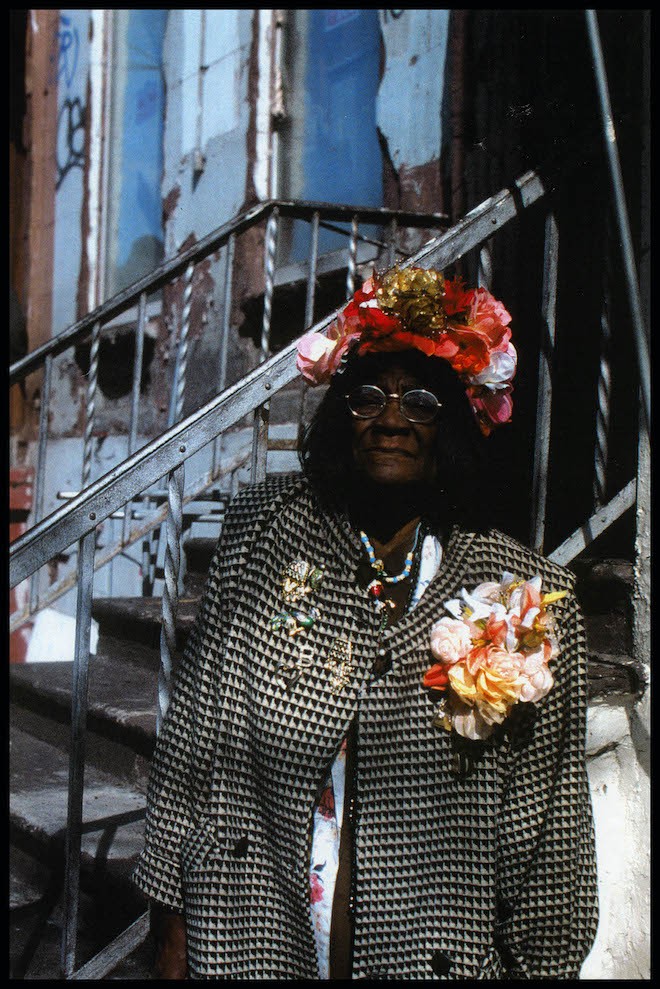
Flower Lady 1996, by Ming Smith 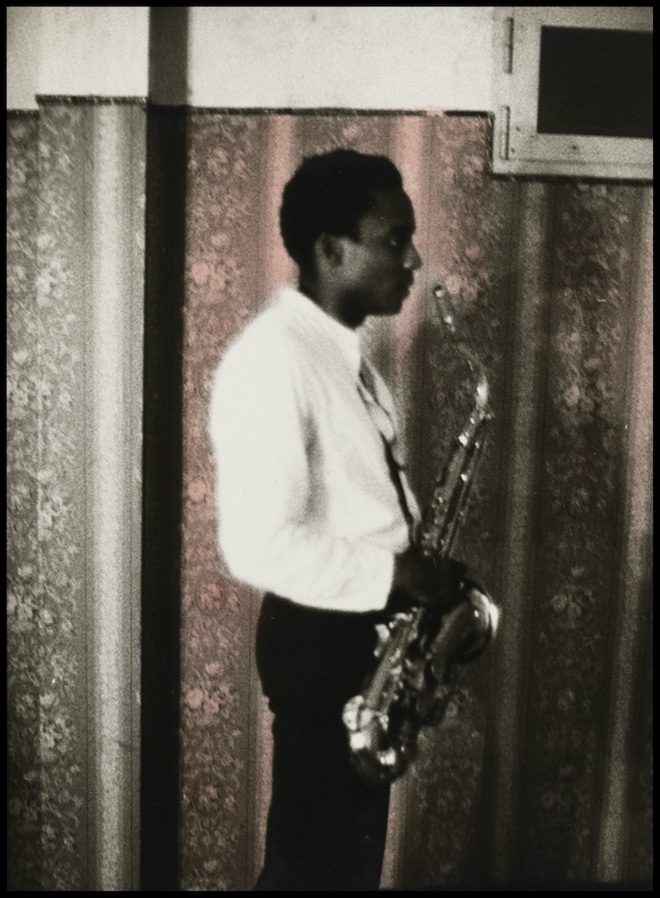
David Murray in the Wings, Padova, Italy, 1978 by Ming Smith
How did you first get into photography?
I borrowed my mother’s camera on my first day of school in kindergarten and I took photographs of some of my school mates. The class was predominantly white, and we were about 10% of the class. I had a lot of friends and classmates that I took photographs of.
Did you feel looking back that there was a central focus for your photographs?
It was just a natural thing. My father was a photographer. He was a hobbyist but he was really artistic: he drew, painted, did films and things like that. However he worked 12 hours a day as a pharmacist, so he didn’t do photography a lot, however I think it then became for me a natural thing to do.
You trained to be a doctor initially, and then you decided to focus on a career in photography.
My grandfather would always say that he wanted me to be a doctor. I liked that because he taught bible school, and my grandmother was helping all the neighbours, so I felt that being a doctor was a way of helping people. I know that might sound pretty naive but that was what I wanted to do. I did volunteer work at the children’s hospital when I was young. I saw a lot of pain around me, so I wanted to help. Being a doctor was a way of trying to help. Then I read something about artists, and they were talking about the system and how your work could help humanity, and you work could be outside of the system, instead focusing and turning ideas into something that would be healing.
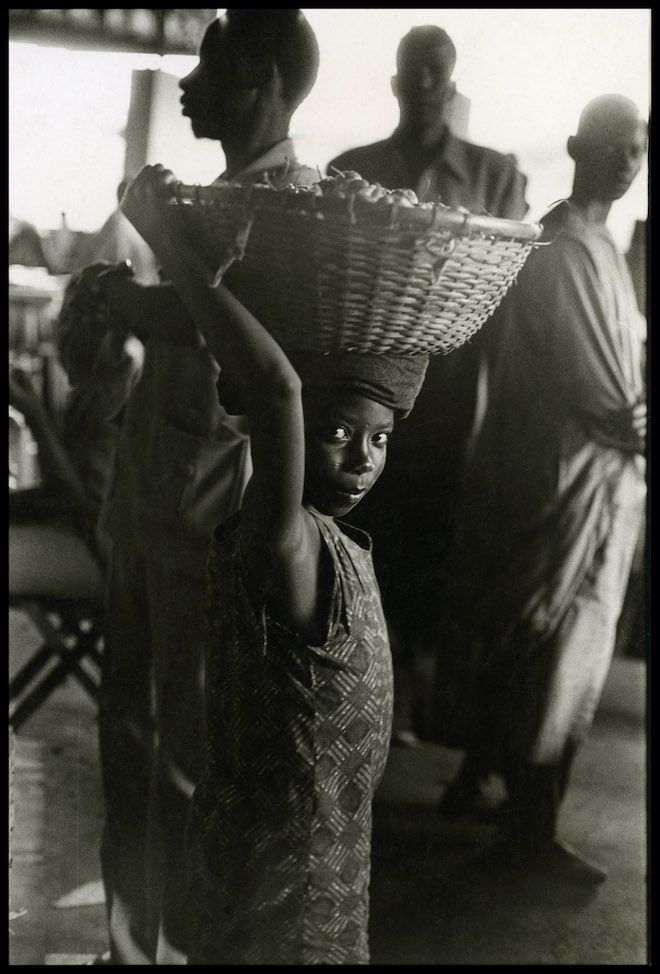
There is such a sense of intimacy and connectivity about your images. How do you capture that? What do you look for in your subject matter?
Well there are stereotypes of the Black community, but there is so much love in the community, from people who were making and doing the best spiritually or going to church. There was just this stereotype of Black people, you know, and I never saw those types of images with the love and the empathy and the humanity with the people that were around me in my community.
You have become renowned for your portraiture for Black cultural figures and icons What did you hope to profess or present in these images of these icons?
I hope that other young people or students will find inspiration in what they are teaching: the struggles and what they went through to get to where we are now. For example, August Wilson, I went to Pittsburgh and photographed his hometown and economically depressed neighbourhoods and shot some of the places he talked about in his plays. He documented the comic and the tragic aspects of the African American experience in the 20th Century. The characters in Pittsburgh were the same characters that I knew in Ohio where I grew up, or Detroit, where I was born.
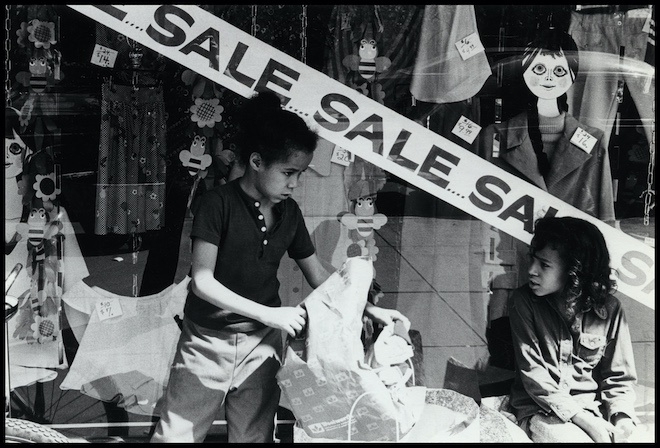
What would you say the main challenges you have faced in your career?
I would say being taken seriously. I am a better photographer than a talker. I am quiet, and I like that with photography you can be by yourself, you don’t have to talk. Being shy, photography was a way of me being in it but out of it at the same time. If you are a quiet person it’s harder to take you seriously.
I went to a gallery seeking representation, and the gallerist didn’t hardly even look at my photographs; it was very disappointing. Just like “ok, thank you”. Just total dismissal.
Did you have a lot of other female counterparts and friends that were experiencing the same in the art industry or the creative industry?
I am sure there was, and I’m sure there is, but I have really continued to be a loner and doing photography was almost like a friend or a companion and was how I spent my time. Being a photographer was a way of expressing yourself and going through your own challenges, and needs, and so I spent my time not really talking to anyone else.
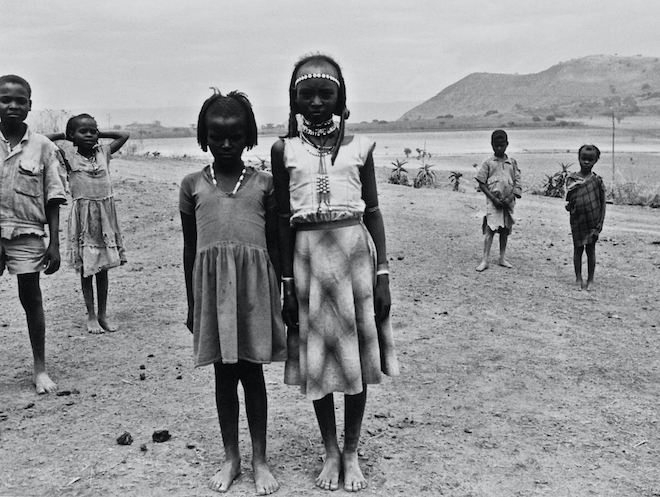
What was New York like when you arrived? What were you focussing your photography on?
When I got to New York I was photographing but I came for money, and one of the first jobs I had was as a model. It was like 100 dollars an hour: an Ohio pharmacist back then was making 100 dollars a week.
Someone told me ‘you should be a model’, and so I tried it for a bit. When I first met Grace Jones, she was an aspiring model also.
You were part of the Kamoinge Workshop: did you feel like things changed then, that you were a part of a group of like-minded individuals?
Going to the meetings, I was first introduced to photography as an art form. Prior to this I had not committed myself to being an artist. I didn’t think of myself as a photographer as I was still studying pre-med curriculum. So when I came to Kamoinge, I had first heard about the collective on an assignment, where a photographer was talking about whether photography was an art form. I was invited into Kamoinge by Lou Draper, who also printed for Eugene Smith. He used to tell me stories about Lorraine Hansberry, who I loved. that was when I first learned about the goal of Kamoinge: to own and interpret our own images. Roy Decarava was one of the founders of Kamoinge, which came out of the Black Arts Movement, where they started plays, and there were writers, musicians, painters, artists. That is where I learnt about lighting. I remember one member saying that his neighbourhood grew up in Harlem, and that all the young men that he grew up with were all dead. That opened my eyes to the politics.
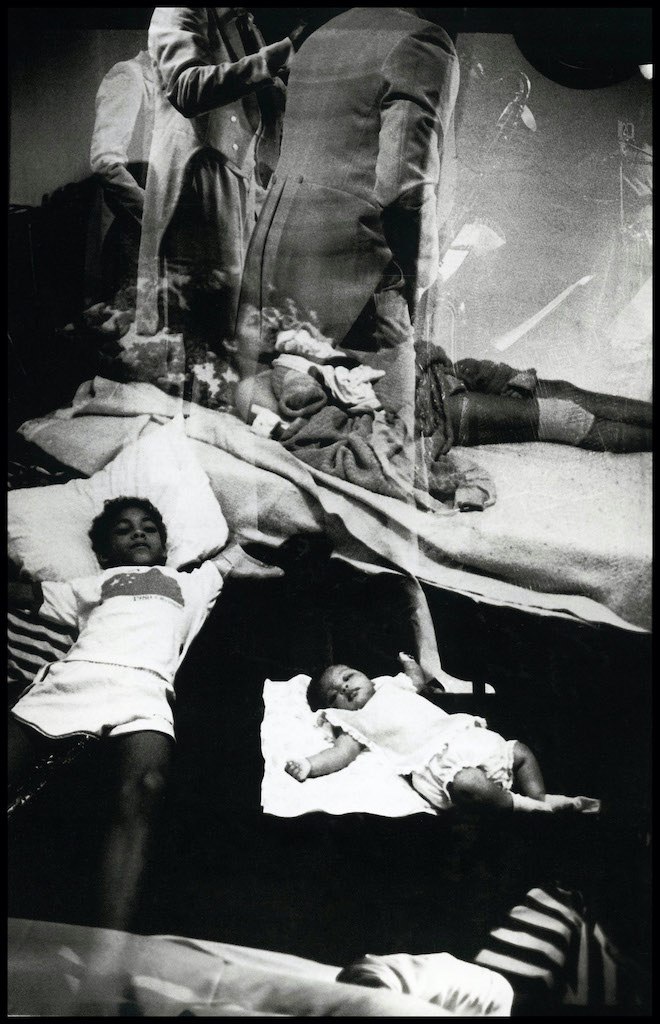
Tell us about your experience of fashion photography.
In New York I never knew about fashion photographers and advertising: it was a completely new world. I had a chance to go into both of those worlds, as I was modelling. I met people like James Moore who was a beauty photographer, or Arthur Elgort or Deborah Turberville, who I loved. She photographed my lips for a Bloomingdales bag! She did fine art photography besides that; I really liked her. I lived in the Village, so I knew Lisette Model, and I would go eat at this little dinner, the Waverley – the cheapest diner! You could buy a meal for five dollars there, and that was where Lisette Model would eat too! She would tell me stories about Diane Arbus, and she would call her Dion. For the longest time, I didn’t realise she was talking about Diane Arbus as she called her Dion!
You documented some of the greatest spokespeople of the African American experience.
August Wilson really told our stories through his plays: the comic and the tragic of the African American experience. That is what connected me to him, to go to Pittsburgh and photograph him. Eugene Smith did a famous series on Pittsburgh, but the African American experience wasn’t documented. This is another aspect of my work. We also have Katherine Dunham. She was an anthropologist, choreographer, writer. She was an activist as well: she wouldn’t perform in places unless they de-segregated the audiences. There is always a struggle, that is extremely distressing of the black American community. They simplified the experiences of the black community in the 20th Century. Katherine went to Haiti and Africa and notarised the dance technique. When she won the Kennedy award, she talked about how hip hop came out of her technique, meaning the isolations and different notations of moves and contractions and release. Now we have dance, twerk, afro-latin, west African, Haitian, rumba, Caribbean, west African beats. We have had all these different classes come out of the diaspora. That is what Katherine Dunham did.
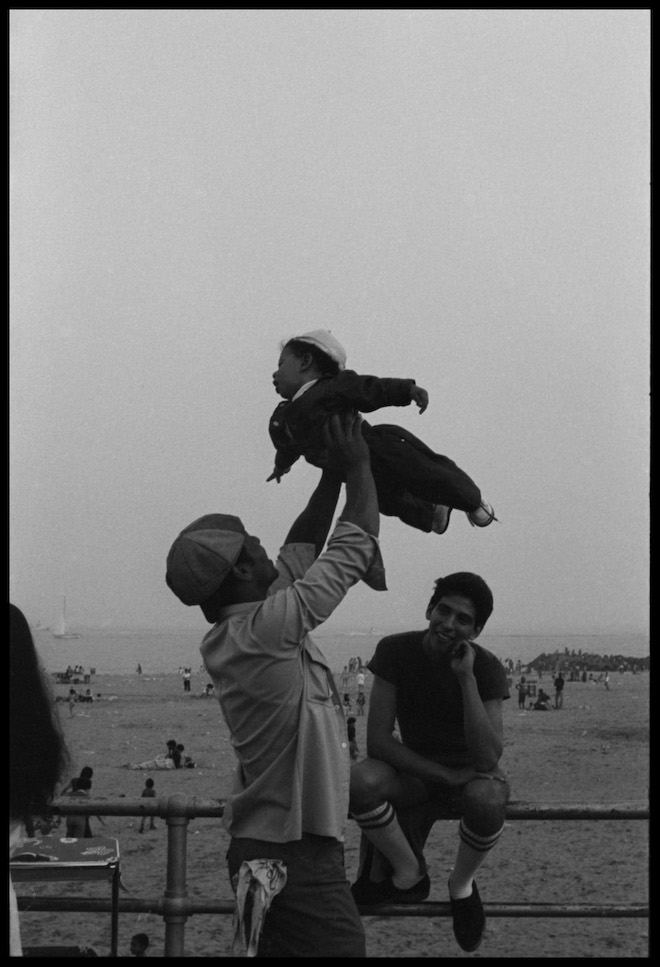
How do you get inspired?
I follow mainly instincts and my heart about things. I hope to say these things in my work: that is the intention.
Would you say your photography is driven by intuition?
Definitely. Intuition, which is also very spiritual. It is like there is a spirit that speaks within me, and I go with that. I trust that more than I trust my brain.
What changes do you see in the photography industry now?
There is a lot more inclusion, and participation. There are different avenues for photographers – there are now young black American fashion photographers, and I think a lot of the hip hop generation are participating in that inclusion, you can go into documentaries, they work with the NYT. I think this is not only in America, but globally.
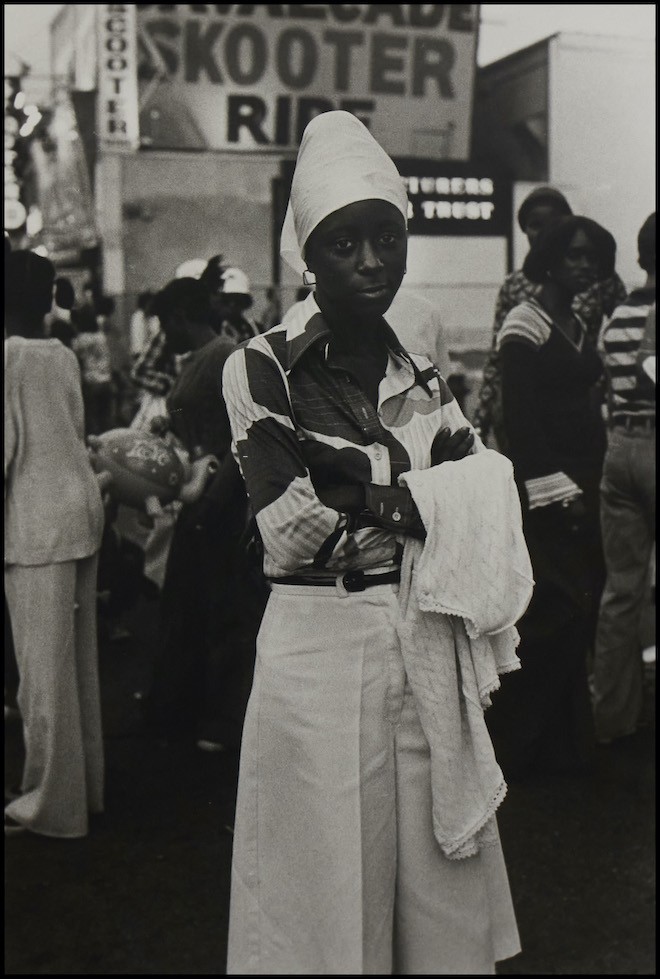
Do you think there are still many racial obstacles that need to be overcome in the art industry?
I think of course, but I am in the middle of it, and sometimes it is harder to see, but of course I think there has been many steps in the right direction. Dr Deborah Willis, she started doing books on black images, she started this in publishing and the School – she has made a life of that. I remember she came to Kamoinge to do a book. It wasn’t easy for her to receive support so I think that we have a voice now greater than before and it is growing. People are conscious of it, and they are trying to make it right, or more honest: the documentation of us, including us. Not just the stereotypes. More human.
Do you see more women photographers being showcased?
Most definitely, but I also think that there is more of an option. Before, it was a question of what could you even do with photography! Photographers and artists now, there are different avenues and you can earn a living from it! I see this more and more. Before, what could you do with it, how could you earn a living? Now, photographers both men and women are like ‘oh I could do photography, portraiture.’
There wasn’t any kind of show, exhibitions, talks, creating a book… there wasn’t those options. You did it out of pure love in the beginning. You did photography as an art form.
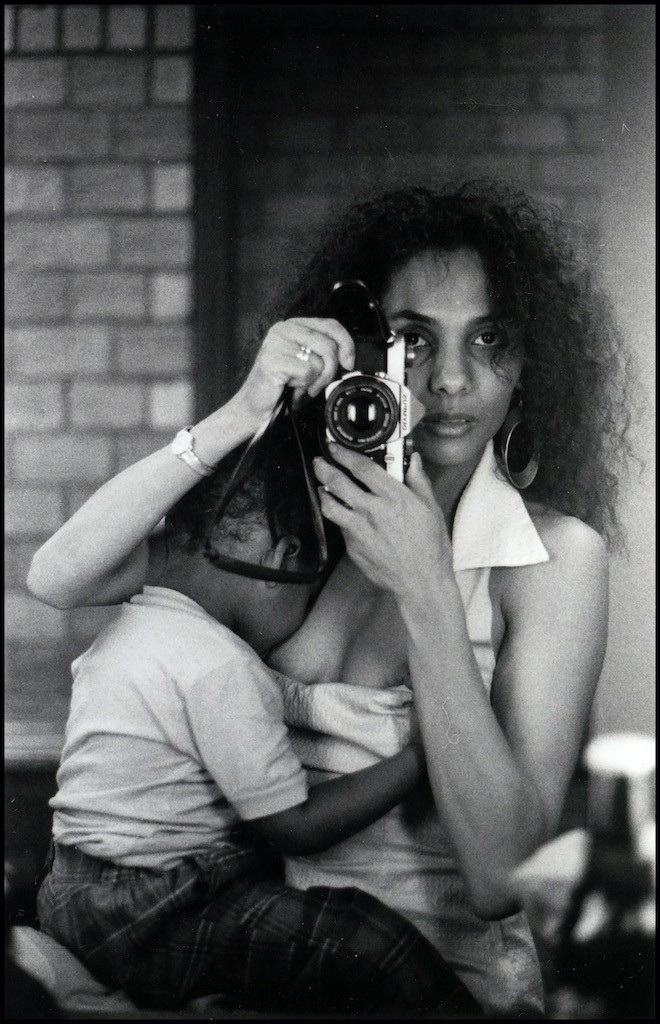
Do you still photograph regularly?
Yes I do! The main obstacle with that is everything is digital now. I am doing a book at the moment for Aperture, and so taking it from film to digitising it, to having to re-edit everything over again… it’s a lot! I need a lot of help with the translating of it.
What do you hope viewers take away from your works?
I think just the personal struggles, the empathy or the humanity or the altruism or just being supportive. Maybe the humanity, and that being exposed to the people I have photographed, they will know what to do. It was like when I heard my first August Wilson play, or the drum, and I went and took my first dance class and the teacher told me he was a Katherine Dunham dancer. People will get what they get from my photography: hopefully an experience that will inspire them in some kind of way.
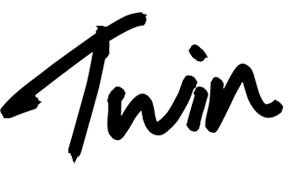
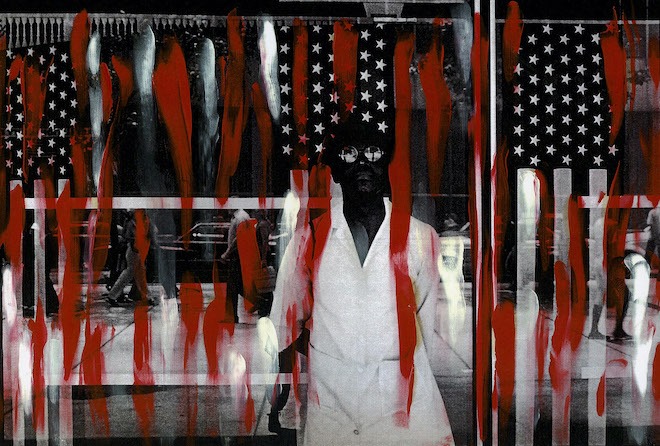

 Twitter
Twitter
 Tumblr
Tumblr
 YouTube
YouTube
 Facebook
Facebook
 Instagram
Instagram
